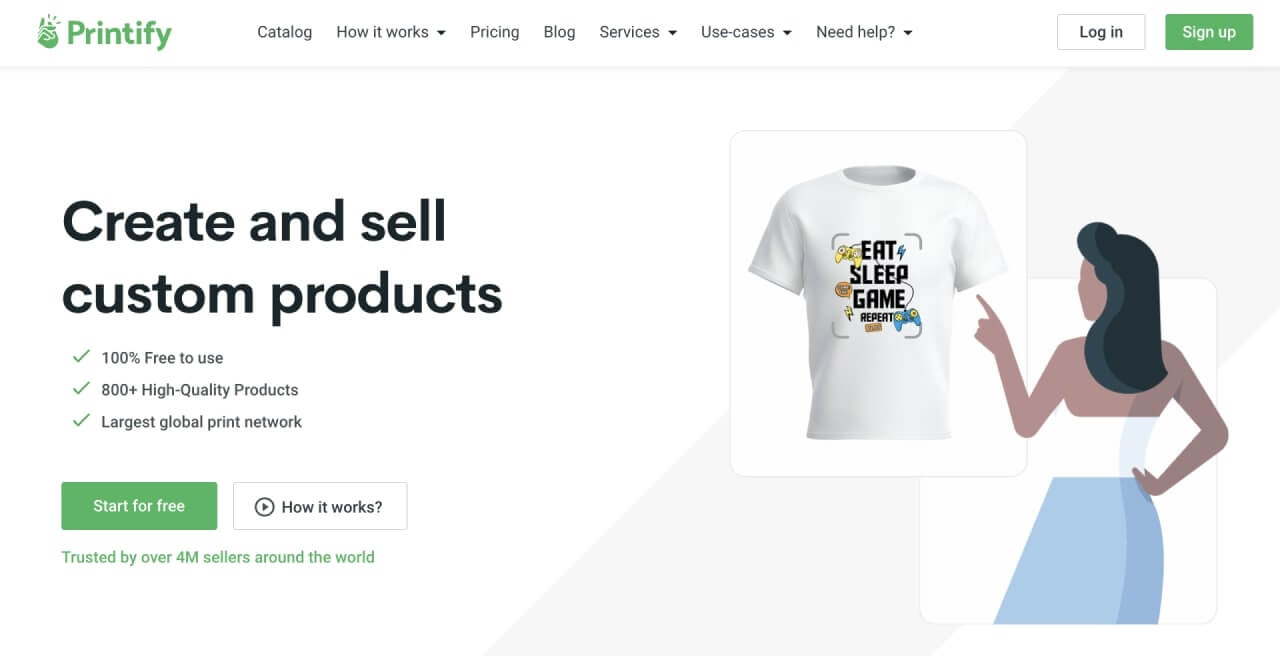

You’ve decided to open your own business and are interested in custom stationery. However, you’re unsure how to get started and want to check if the sector is still profitable in this digital era.
Despite the decline of some stationery products, there’s an adapting and booming industry to take advantage of.
This article will explain how to start a stationery business, from fulfillment to marketing. You’ll also learn which stationery areas are trending and how to make the most of them with the help of Printify and Print on Demand.
The industry sells paper-related goods such as greeting cards, thank you notes, invitations, gift wrapping paper, wedding planners, or calendars. Stationery shops may also offer office supplies like paper, envelopes, and gifts.
This kind of business usually specializes in one or more of these areas:
Although the stationery industry has strong digital competitors, there’s been a shift inside the market.
Digital stationery grew in popularity during the pandemic. Some areas, like the wedding industry, have a comeback and are projected to reach a whopping $103.5b by 2033.
You can outsource your printing and work with POD partners or set up your own printing equipment. Acquiring high-quality printers, computers, and specialty paper will have considerable costs. Outsourcing has a low startup cost and provides you time to focus on the design and marketing processes.
These are the main pros and cons of starting a stationery business in 2024:
Pros:
Cons:

Before running a successful stationery business in 2024, it’s essential to note that many cons are solved if you use a POD partner.
The Printify Catalog offers a dedicated section for stationery accessories and other suitable products, from cards to journals and notebooks – we’ll cover more on this later.
Now that you understand more about the stationery industry, it’s time to break down the entire process.

A niche includes your specialty and target audience. It’s impossible to reach everybody and deliver all kinds of stationery with the same perfection, so focusing on a niche is fundamental to success. Define if you want to specialize in wedding, personal , or commercial stationery according to your preferences and skills. Weddings or personal stationery could be your best choice if you prefer working directly with clients. Once you’ve defined this, start looking for your ideal customer. Ask yourself what they enjoy, which social network they frequent, and what motivates them to spend money. Also, consider where they live and how broad your geographical reach will be. Use every available tool to refine your niche – like Google Trends , marketplace analytics, Amazon, Google, Bing, and all social networks. If you discover your intended niche is too competitive, analyze if you can outrun the competition or if it’s best to change your approach.

A business plan is a guideline featuring goals, strategies, and timelines. Writing one helps small businesses succeed by clarifying the approach for gaining customers and gathering actionable data. During planning, you’ll establish the need for special business licenses, documents, additional funding, or bank loans. Write a traditional financial plan if you intend to receive funding. Describe the business in detail and include financial projections and needs. Go for a lean business plan if you’re developing a small and flexible business while learning on the go. Include only critical data like unique selling propositions, revenue streams, and partners. All business plans require factoring in ongoing costs , such as renting office space and daily operational expenses. Include one-time and variable business expenses like hiring a designer. Learn in depth how to write a business plan in our blog. You also can find templates from the US Small Business Administration .
Check the tax requirements – there are two different types in the US:
Some companies like ZenBusiness assist in registering LLCs and declaring taxes. Also, check our Help Center for FAQs about taxes worldwide.
Remember to create a business credit card and bank account for your stationery entrepreneurship, separate from your personal assets.
In the US, a business bank account requires the following:
Acquiring business or general liability insurance is highly recommended, especially if you need to keep flammable inventory. For companies with employees, business insurance is mandatory by law.
Most banks provide insurance plans, so you may find this at the same institution as your business bank account. Or look into other insurance companies , including Hiscox , Liberty Mutual , or State Farm .
Check with your local council if any additional license or permit is required to operate in the city or state.

It’s time to think about how to brand your company. Consider your new stationery business name, logo, visual identity , and tone of voice – all these elements should be cohesive. Remember that your name and identity must reflect the type of stationery you offer.
Start with some market research and see how other brands position themselves. Look for similar services, check where your competitors sell, which language and tone of voice they use, their visual identity, and prices.
Observe customer reviews and check what they like, dislike, and what they’re searching for. Position your brand favorably, considering these factors.
Pick a business name reflecting your brand . Ideally, it should be short, easy to spell and remember, but unique – use a name generator if necessary. Apply the same name when purchasing an internet domain and creating your own website – check the availability on DomainWheel or Namecheap .
Consider hiring a designer to develop your visual identity and create a logo. Programs like Printify Experts provide a broad range of professionals for various budgets. Trademark your stationery business name and other elements you want to protect.

Printify offers a dedicated section for stationery accessories where you can select and design products from scratch. Check suitable products for your target audience, including posters , postcards , greeting cards , journals and notebooks , napkins , calendars , and holiday cards .